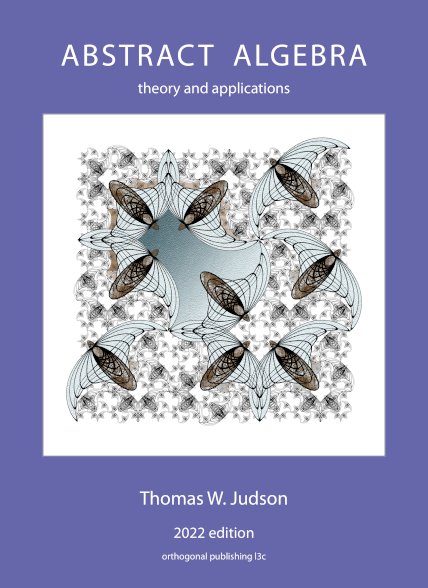Section 12.1 Matrix Groups
Subsection Some Facts from Linear Algebra
Before we study matrix groups, we must recall some basic facts from linear algebra. One of the most fundamental ideas of linear algebra is that of a linear transformation. A linear transformation or linear map
An
where
Conversely, if
We can write any vector
Consequently, if
then
Since we are interested in groups of matrices, we need to know which matrices have multiplicative inverses. Recall that an
is the
Example 12.2.
Some other facts about determinants will also prove useful in the course of this chapter. Let
- The determinant is a homomorphism into the multiplicative group of real numbers; that is,
- If
- If we define the transpose of a matrix
- Let
Linear maps, matrices, and determinants are covered in any elementary linear algebra text; however, if you have not had a course in linear algebra, it is a straightforward process to verify these properties directly for
Subsection The General and Special Linear Groups
The set of all
Example 12.3.
Given a
Geometrically,
be in
Subsection The Orthogonal Group
Another subgroup of
Example 12.5.
There is a more geometric way of viewing the group
We define the length of a vector
Associated with the notion of the length of a vector is the idea of the distance between two vectors. We define the distance between two vectors
Proposition 12.6.
Example 12.7.
is the Kronecker delta. Accordingly, column vectors of an orthogonal matrix all have length 1; and the Euclidean inner product of distinct column vectors is zero. Any set of vectors satisfying these properties is called an orthonormal set. Conversely, given an
We say that a matrix
Theorem 12.8.
Proof.
We have already shown (1) and (2) to be equivalent.
Thus, the
Observe that
Example 12.10.
Let us examine the orthogonal group on
where
Two of the other matrix or matrix-related groups that we will consider are the special orthogonal group and the group of Euclidean motions. The special orthogonal group,
The identity of the group is

